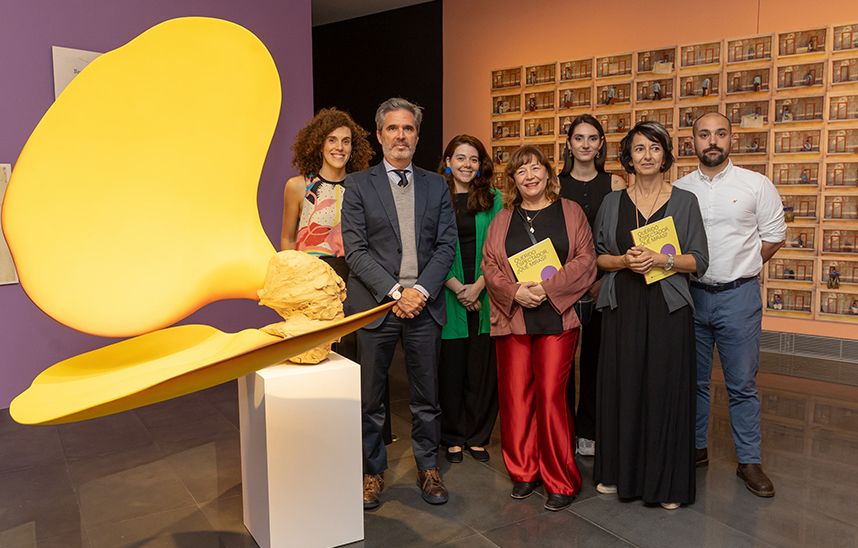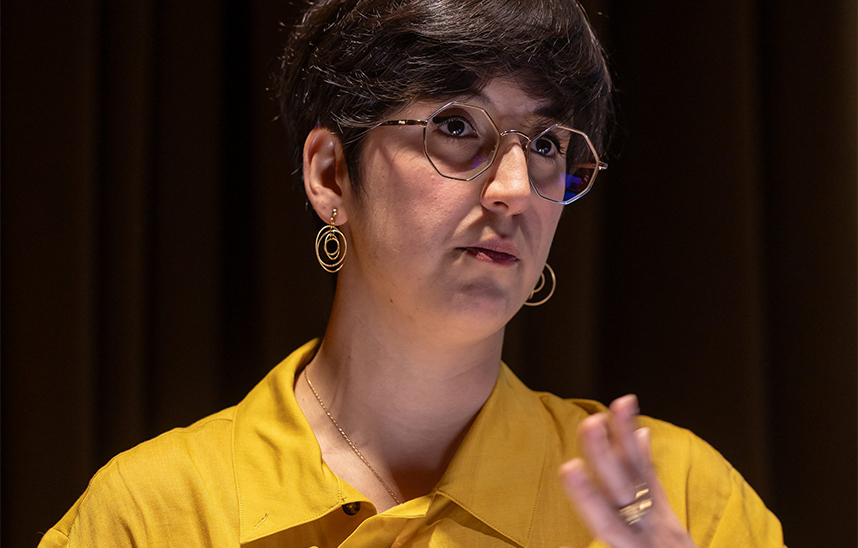The MUN presents the new creation of La Venidera, a commitment to Spanish dance from a contemporary perspective.
Irene Tena and Albert Hernández, former principal dancers of the Ballet Nacional de España, open a new stage dedicated to their company, focused on the renewal of the language of flamenco.

24 | 10 | 2025
The Museo Universidad de Navarra presents the new creation of La Venidera, a commitment to contemporary Spanish dance.
Irene Tena and Albert Hernández, former first dancers of the Ballet Nacional de España, open a new stage dedicated to their company, focused on the renewal of the language of flamenco.
Pamplona, October 23, 2025 - After their time with the Ballet Nacional de España, Irene Tena and Albert Hernández decided to dedicate themselves fully to their company, La Venidera. This Friday at 7:30 pm they present at MUN No, the first major proposal of this new stage, which premiered just a few days ago at the Centro Danza Matadero (Madrid), with great support from the public and colleagues. They explain that this piece "broadens and deepens the margins of Spanish dance". Tickets can still be purchased at the locker and on the web for this show that will give the public the opportunity to see this discipline "from a very contemporary aesthetic, very careful," says Hernandez. To see flamenco from other perspectives", surrounded by "other arts, thus becoming a universal language".
The dancers return to the MUN theater highlighting the trust that has always been placed in them, something "that is not so usual" for young creators, says the choreographer. "Irene Tena and Albert Hernández have been at the MUN on several occasions, dancing with the Ballet Nacional de España or in works by other contemporary dance choreographers -reports the artistic director of the MUN, Teresa Lasheras-, but on this occasion they deserve our support to move forward as creators with their own artistic project , which seeks to force the seams of the classic languages of Spanish dance and venture into new terrain. Their artistic courage is undoubtedly at the height of their talent, and they are an example of honesty and commitment to their discipline in the effort to advance it without betraying it".
With artistic advice from choreographer Marcos Morau, No is "an introspection, a return to ask ourselves who we are, what is our identity," explains Tena. A show "very thoughtful and careful", to which they have devoted a lot of time, completes Hernandez, who also stresses that their desire and enthusiasm have pushed them to dare, to take a risk at a vital level, abandoning the stability that gave them the National Ballet; but also the risk of proposing "something genuine" that identifies them.
So No alludes to life as a succession of decisions, because when we say yes to a choice we are saying no to another possibility. Everything we had to say no to in order to consider this new creation has opened many yeses, many doors for us in the end," says the dancer, "but it was important to recognize everything that had not identified us so far. La Venidera thus asks itself a series of questions to find its own identity, a series of questions, says the performer, that lead to "ask yourself everything, to not take anything for granted". And, from there, they cover all the issues that Spanish dance encompasses: how it is presented, how it has to be danced? Consequently, No opens "a space for research, reflection and questioning".
But, in addition, this piece "hides many hidden messages", confesses Albert Hernández, and alludes to patience: "to take time to do things, in these times when everything is going very fast and we are all in a hurry".
No is a show in memoriam of Gina Granozio Motta, with the support of the Motta family. It is part of the VIII edition of Museo en Danza, a cycle supported by INAEM, DNA - Festival de Danza Contemporánea de Navarra, the Government of Navarra and the City Council of Pamplona. From its beginnings, it brings together the firm commitment of the MUN for the new creation in contemporary dance.


